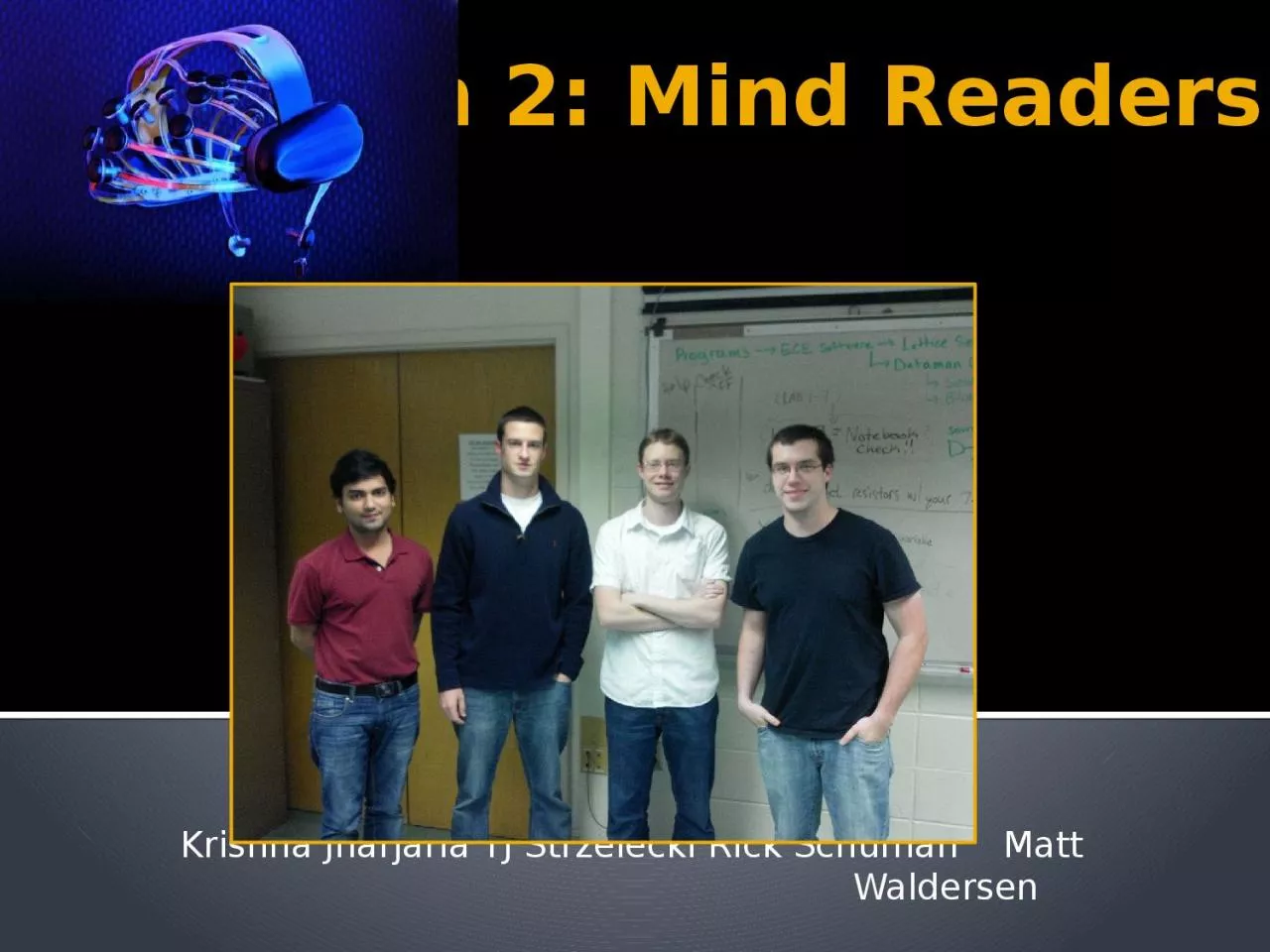PPT-Team 2: Mind Readers Krishna
Author : joyce | Published Date : 2024-03-13
Jharjaria TJ Strzelecki Rick Schuman Matt Waldersen Project Overview The Mind Reader is a mobile braincomputer interface Computer applications will be presented
Presentation Embed Code
Download Presentation
Download Presentation The PPT/PDF document "Team 2: Mind Readers Krishna" is the property of its rightful owner. Permission is granted to download and print the materials on this website for personal, non-commercial use only, and to display it on your personal computer provided you do not modify the materials and that you retain all copyright notices contained in the materials. By downloading content from our website, you accept the terms of this agreement.
Team 2: Mind Readers Krishna: Transcript
Download Rules Of Document
"Team 2: Mind Readers Krishna"The content belongs to its owner. You may download and print it for personal use, without modification, and keep all copyright notices. By downloading, you agree to these terms.
Related Documents













